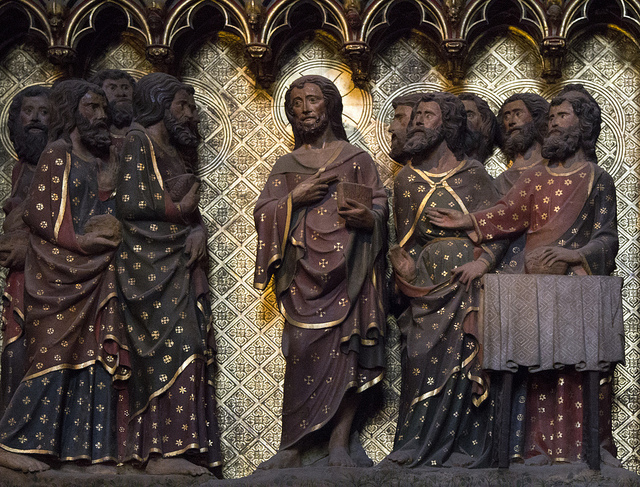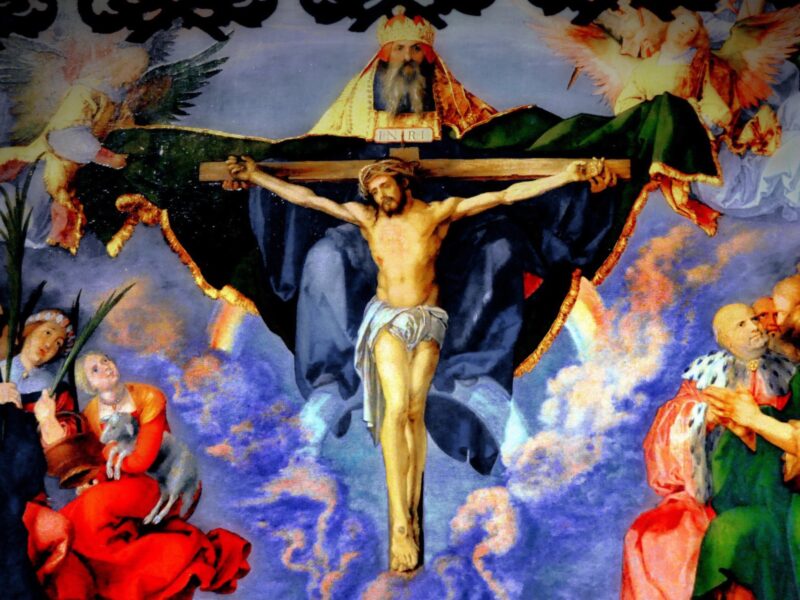
Risen in the Flesh
Third Sunday of Easter. Fr David reflects on the importance of emphasising that Jesus really rose in the flesh.
“Touch me and see for yourselves; a ghost has no flesh and bones as you can see I have.” Jesus appears to his disciples after the Resurrection. They know that he was killed. They know that his body had disappeared from the tomb. So they know he is not simply alive again, in the sense that he didn’t really die, but instead because they know he did die, they think they must be seeing a ghost. Jesus makes it clear to them that they are not seeing a ghost. The language of flesh and bones, this talk of touching Jesus, like with the story of Thomas touching the wounds in his hands and his feet, is intended to make us envisage a real body. Jesus’ resurrection was bodily.
It is important that the appearances of Jesus were just that: appearances rather than apparitions. It matters for at least two reasons. The first reason is that if it was an apparition, a vision, a trick of the light or some sort of strange mystical experience, if it was that, then we have no way of knowing whether or not it was true. If it was that, then we might say that the disciples “were seeing things”. Usually when we say people were “seeing things”, we mean that it didn’t really happen: they imagined it, or were tricked into seeing something that wasn’t really there. So this is crucially important because it affects the truth. Did this thing really happen or not? So, the fact that it is not a ghost, the fact that it is flesh and bones, means it is real; it is true, this is really happening.
Emphasising the reality of bodily appearances also encourages us to unite the body with the spirit. There is a tendency to think that our bodies as irrelevant to spiritual matters. It’s an attitude that is very common and is often found in popular culture. Ideas like: “It doesn’t matter what you look like, it’s what’s inside that matters.” Alternatively, someone will say of someone else: “they are really beautiful inside” – inferring that they are physically lacking.
Spiritual well-being can help us overcome physical disabilities, but that is likely to be because the physical and the spiritual are intrinsically linked. Similarly, looking after ourselves physically seems to have a spiritual benefit. The physical and the spiritual are not separate entities. They are aspects of one entity: a human person. Body and spirit go together and nurturing one nurtures the other. Likewise, harming one harms the other. Dangers abound if we try to separate the body from the spirit. We could think that the spiritual is more important than the body, but the reality is that neglect of the body is likely to have a negative impact on the spirit.
This may seem to have strayed a long way from the matter of Jesus’ appearance to his disciples, but what this story of Jesus’ flesh and bones tells us, is that the body and the spirit are not separated in the way that we sometimes tend to think they are. The message is that God made us whole, body and soul. The fact that Jesus is still a body, even after the Resurrection, tells us something about the body. Our bodies are not irrelevant to who we are. We can’t be who we are, without being bodies. So somebody, who hates the body, hates themselves. We are spiritual and bodily people. “Touch me and see for yourselves”, Jesus says, “a ghost has no flesh and bones as you can see I have.”
Readings: Acts 3:13-15.17-19 | 1 John 2:1-5 | Luke 24:35-48


